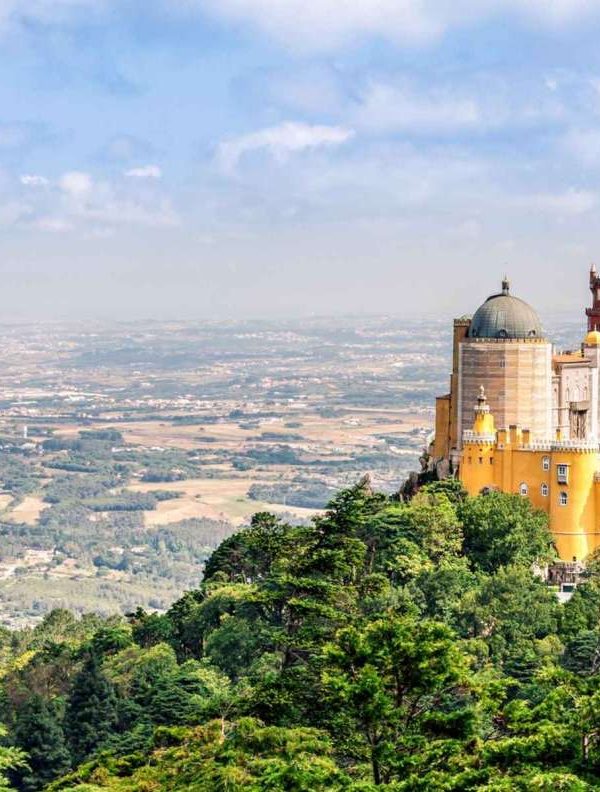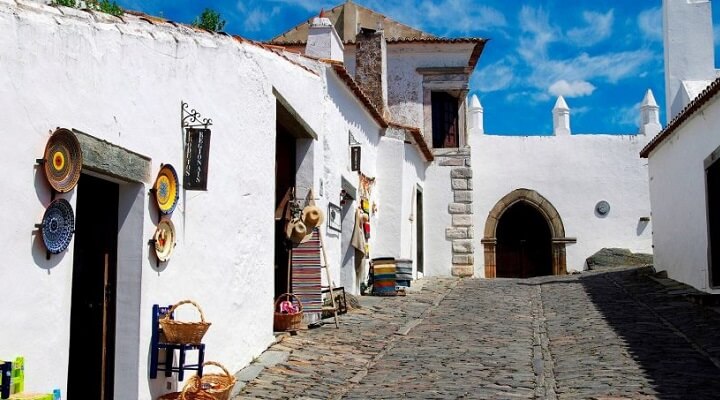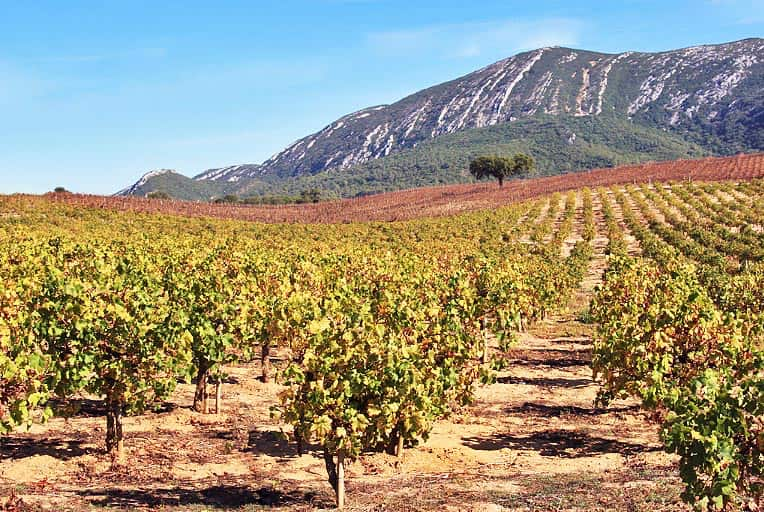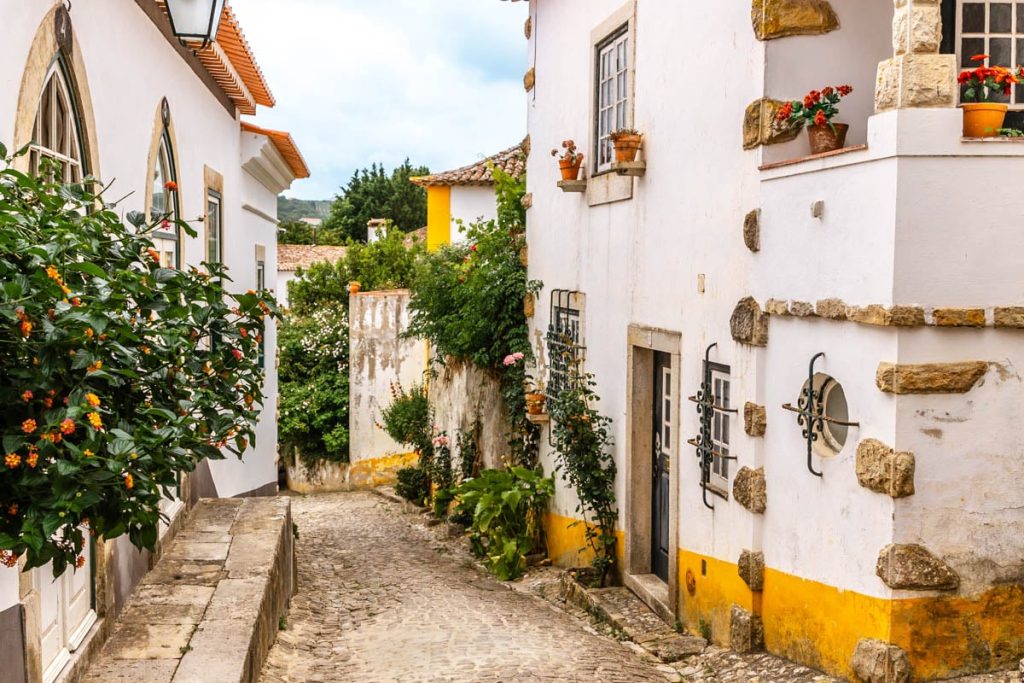Portugal, with its rich history, stunning scenery, and renowned cuisine, offers an unforgettable experience. A 7 days Portugal private tour unveils the best of the country — from historic cities to charming villages and local flavors. Here’s a glimpse of the must-visit spots on a week-long journey.
This private Multi day tour will start and end in the city of Lisbon. If you have any questions, feel free to contact us.
🗓️ Pricing:
| Number of People | Price | Price Person |
|---|---|---|
| 1 Person | 2150€ | – |
| 2 People | 2400€ | 1200€ Per Person |
| 3 People | 2650€ | 883€ Per Person |
| 4 People | 2800€ | 700€ Per Person |
| 5 People | 2950€ | 590€ Per Person |
| 6 People | 3100€ | 516€ Per Person |
| 7 People | 3400€ | 485€ Per Person |
| 8 People | 3500€ | 437€ Per Person |
7 Days Portugal Private: Lisbon and Sintra
Portugal, a country brimming with rich history, stunning landscapes, and world-renowned gastronomy, offers travelers an unforgettable experience. Whether you’re walking through ancient streets, exploring picturesque villages, or indulging in delicious local cuisine, a 7-day private tour in Portugal promises to reveal the best of this charming European destination. Here’s an overview of the must-visit places in Portugal during a 7-day journey.
The adventure begins in Lisbon, the vibrant capital of Portugal. Start by exploring the iconic Alfama district, known for its narrow, cobblestone streets and traditional Fado music. Visit the São Jorge Castle, which provides panoramic views of the city, and wander through Baixa-Chiado, the heart of the city’s shopping and dining scene.
Sintra, a magical town surrounded by lush mountains and dotted with fairytale-like palaces. Visit the Palácio da Pena, a colorful 19th-century palace perched on a hilltop. Its architecture, inspired by Romanticism, is a blend of various styles, making it a must-see in Sintra.
7 Days Portugal Private Tour: Porto and Coimbra
Porto, Portugal’s second-largest city and a hub for world-famous Port wine. Stroll through the historic center, a UNESCO World Heritage site, and visit the Lello Bookstore, known for its stunning interior and as an inspiration for J.K. Rowling’s Hogwarts Library.
Coimbra, a city steeped in history and home to one of Europe’s oldest universities. Visit the Joanina Library, an architectural masterpiece and a must-see for history and book lovers. The library’s stunning Baroque design and collection of rare manuscripts make it a highlight of the city.
7 Days Portugal Private Tour: Fátima and Évora
Fatima is one of the world’s most important Catholic pilgrimage sites, where the Virgin Mary is said to have appeared to three shepherd children in 1917. The Sanctuary of Fatima attracts millions of visitors each year. Visit the Chapel of the Apparitions, where the Virgin Mary appeared, and the Basilica of Our Lady of the Rosary, where the children’s graves are located.
Evora, a UNESCO World Heritage site located in the Alentejo region. The city’s rich history dates back to Roman times. Visit the Temple of Diana, an ancient Roman structure, and the Chapel of Bones, a macabre yet fascinating chapel decorated with human bones, this and much more in our 7 Days Portugal Private Tour, ask us…
Itinerary
We begin the day at Parque das Nações, Lisbon’s modern area marked by Expo 98 and contemporary architecture, including works by Santiago Calatrava. Next, we explore Alfama, the oldest district with narrow streets and the birthplace of Fado. We visit São Jorge Castle and Lisbon’s Sé Cathedral, continuing to Baixa with its Pombaline architecture from the 1755 reconstruction. Passing Avenida da Liberdade, we reach Eduardo VII Park for the views. In the afternoon, we head to Belém, visiting the Belém Tower, Jerónimos Monastery, and the Discoveries Monument, ending with a stop to try the famous pastéis de Belém.
On the second day of our itinerary, we visit Sintra, beginning with an optional visit to the Queluz Palace, known for its Rococo architecture. We then explore the center of Sintra, with shops and the traditional Travesseiros at Piriquita Bakery. The guide will assist in selecting two monuments to visit, such as the Pena Palace, Quinta da Regaleira, or the Moorish Castle. We continue to Cabo da Roca, the westernmost point of Europe, ending the day in Cascais, with its bay and historic center, and Estoril, known for its casino and espionage history.
We start the day visiting a cork factory to learn about the extraction process of cork oak, a tree harvested every nine years. Portugal is the world’s largest cork producer, with uses ranging from wine stoppers to coatings. Next, we head to Évora, a medieval city known for the Chapel of Bones, decorated with human bones, and the Roman Temple of Diana. We’ll also see the Agua da Prata Aqueduct.
Optional: If you wish to visit an Alentejo winery, tasting unique wines made from grapes that mature under the region’s warm, sunny climate.
On this day, we start by visiting Fátima, one of the world’s most important Marian Shrines, including the Basilica of Our Lady of the Rosary, the Basilica of the Holy Trinity, and the Chapel of the Apparitions. In Coimbra, we explore the University, including the renowned Joanina Library with its Baroque art. We’ll visit other university landmarks, like the Chapel of São Miguel, and end by strolling through Coimbra’s historic center. The day wraps up as we continue to Porto.
Our day in Porto begins at Casa da Music, a modern architectural landmark. We head towards Matosinhos, known for its port, and then to Foz, an upscale area. In Porto’s downtown, we explore Avenida dos Aliados, São Bento Station with its iconic tiles, and the bustling Rua de Santa Catarina with Café Majestic. Highlights also include Lello Bookstore, the Porto Cathedral, Bolsa Palace, and São Francisco Church. Crossing the D. Luís Bridge into Gaia, we’ll visit a Port wine cellar and admire views from Serra do Pilar Monastery.
Douro Valley – Our journey begins in Amarante, where we can visit the church and convent of São Gonçalo, the “matchmaker saint,” and admire the 18th-century bridge over the Tâmega River. Next, we head to Vila Real to explore the stunning Mateus Palace and its gardens, birthplace of the famous Mateus Rosé. In the Alto Douro wine region, we’ll enjoy breathtaking views at Casal de Loivos and visit Pinhão’s train station, with tile panels depicting winemaking. Finally, we tour a Quinta, witnessing the entire wine production process, concluding with a tasting.
Braga and Guimarães – Our day begins in Guimarães, a UNESCO World Heritage city, home to the Castle, São Miguel Church, and the Paço dos Duques de Bragança, set amidst medieval streets and squares. After lunch, we visit Braga, exploring its ancient Cathedral, impressive pipe organs, and tombs of Portuguese royalty. We then head to Bom Jesus Park, with its grand staircase and unique water-powered elevator. The day ends with stops at Braga’s Episcopal Palace gardens, Santa Cruz Church, and Republic Square, all surrounded by lush, serene greenery.
On this day, we head back to Lisbon with memorable stops along the way. In Aveiro, the “Portuguese Venice,” we explore its canals, Eiffel-designed market, and try traditional “ovos moles.” We also take a moliceiro boat ride and visit the salt flats. In Nazaré, famous for giant waves and the “seven skirts” tradition, we learn about the Nazaré Canyon and record-breaking surf. Finally, in Óbidos, a medieval village, we wander charming whitewashed streets and learn about its Templar and royal history.

























